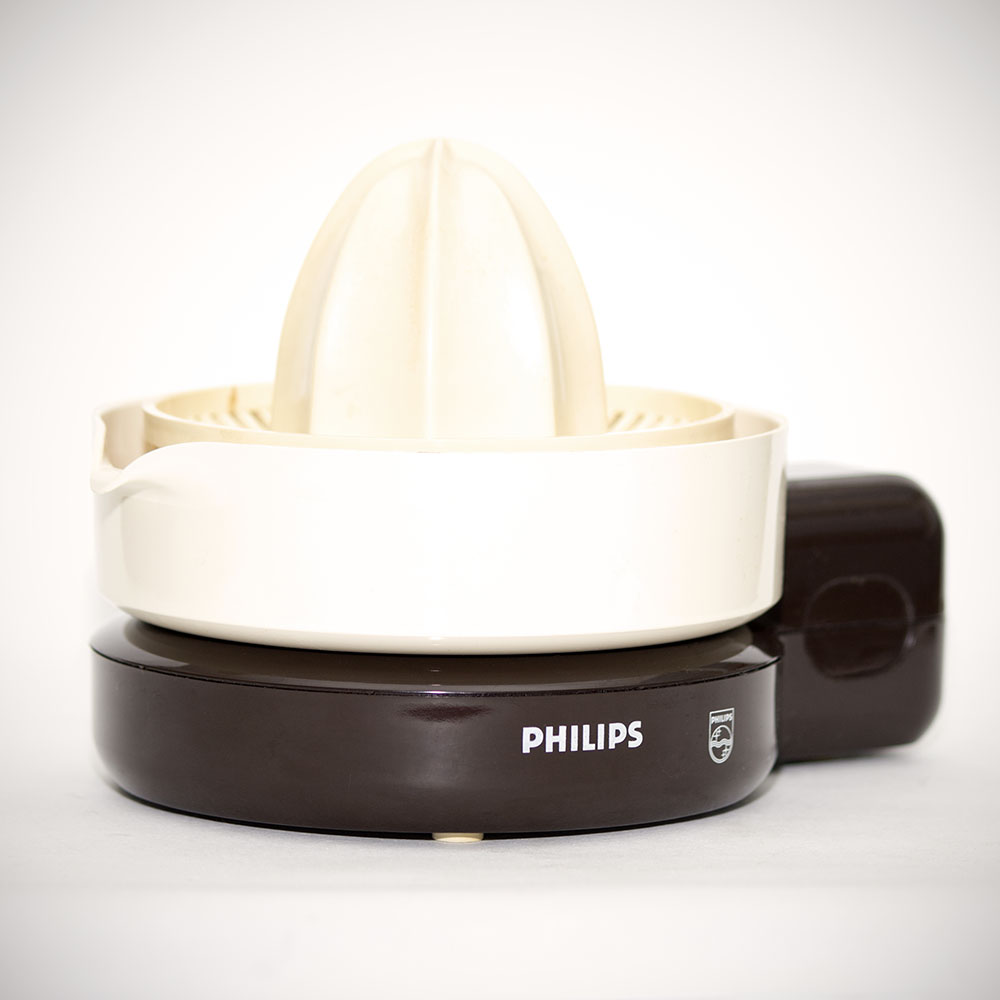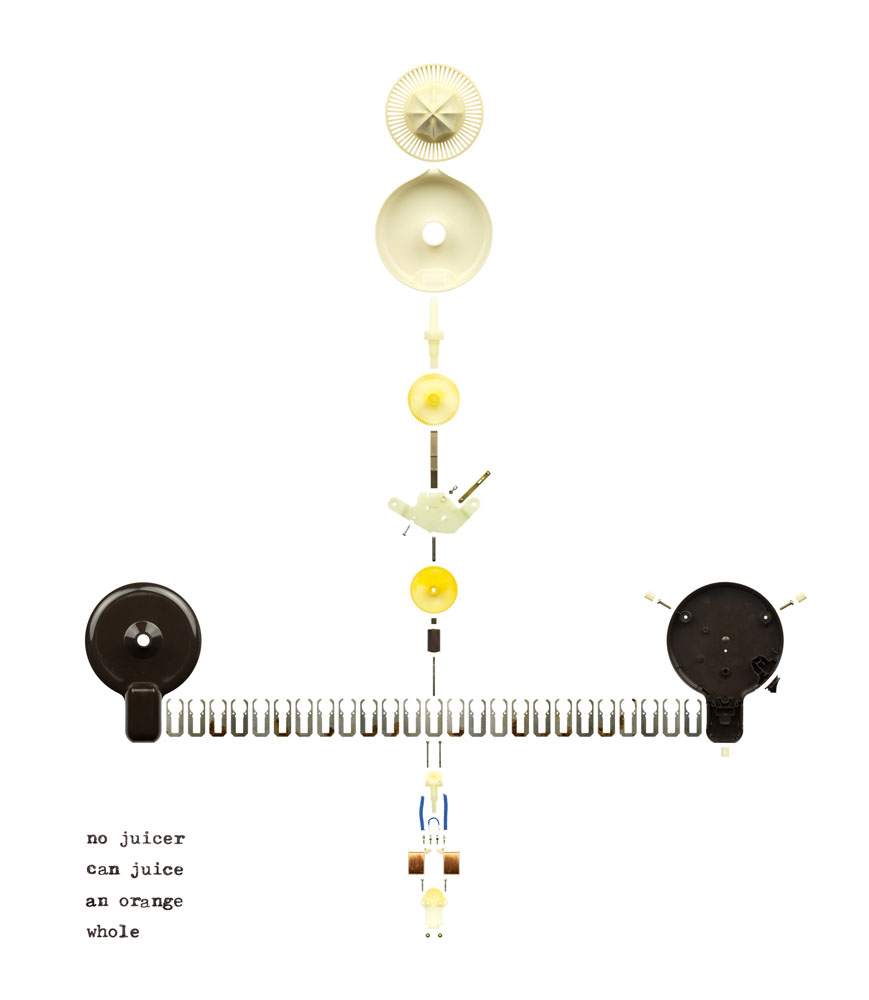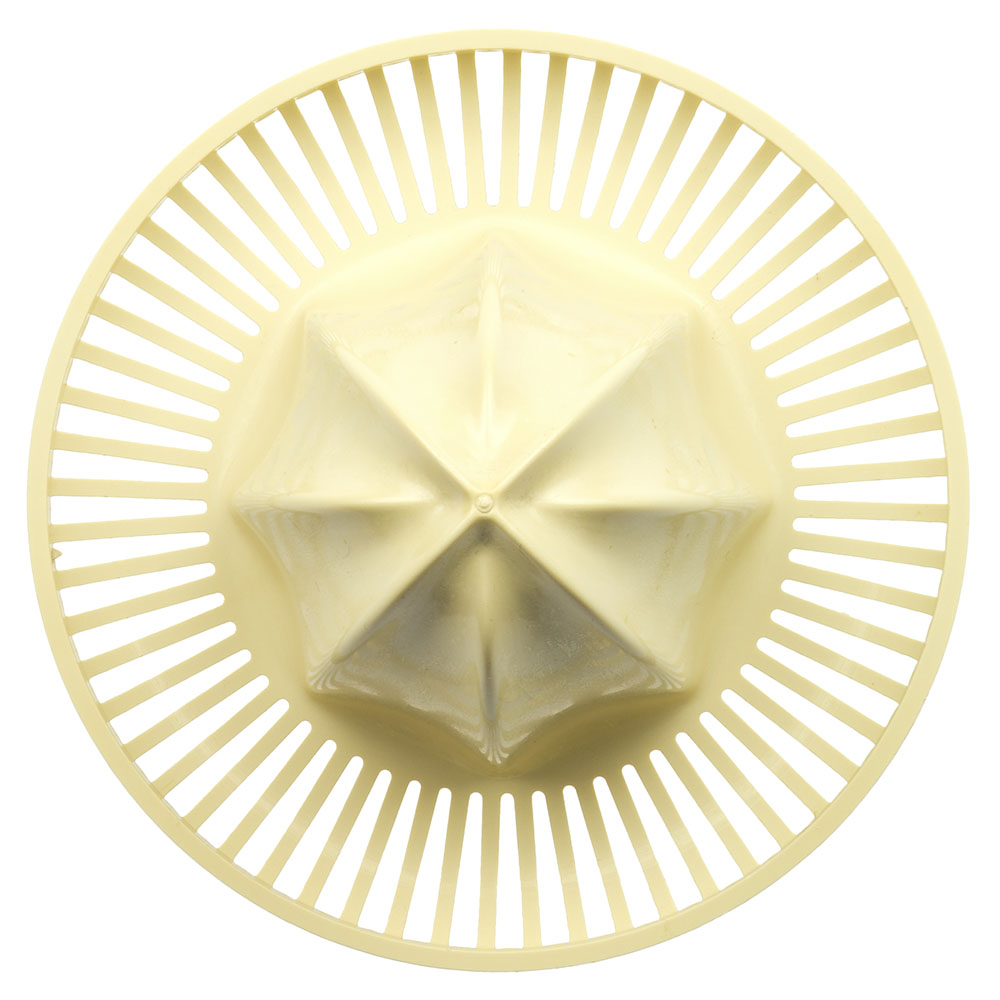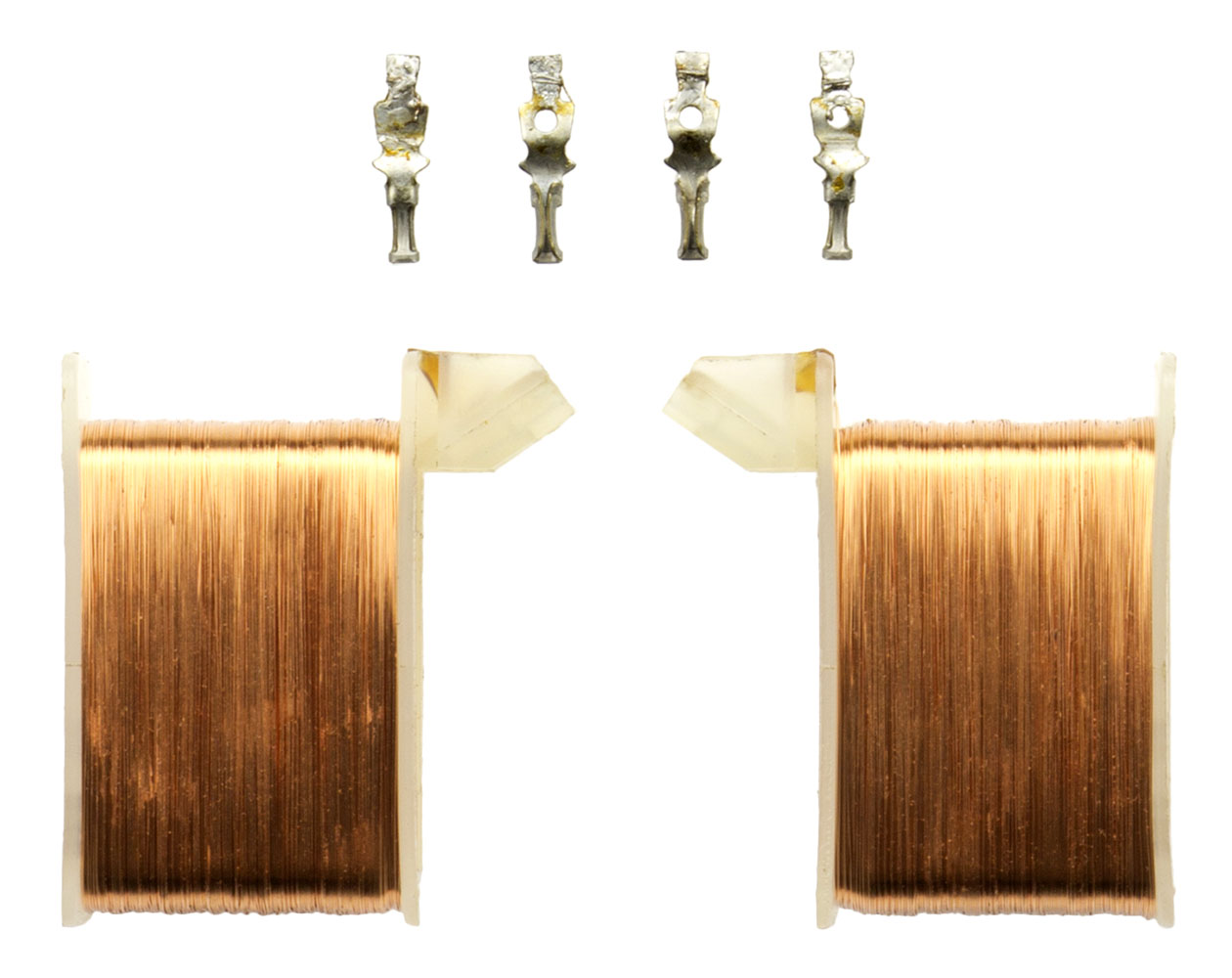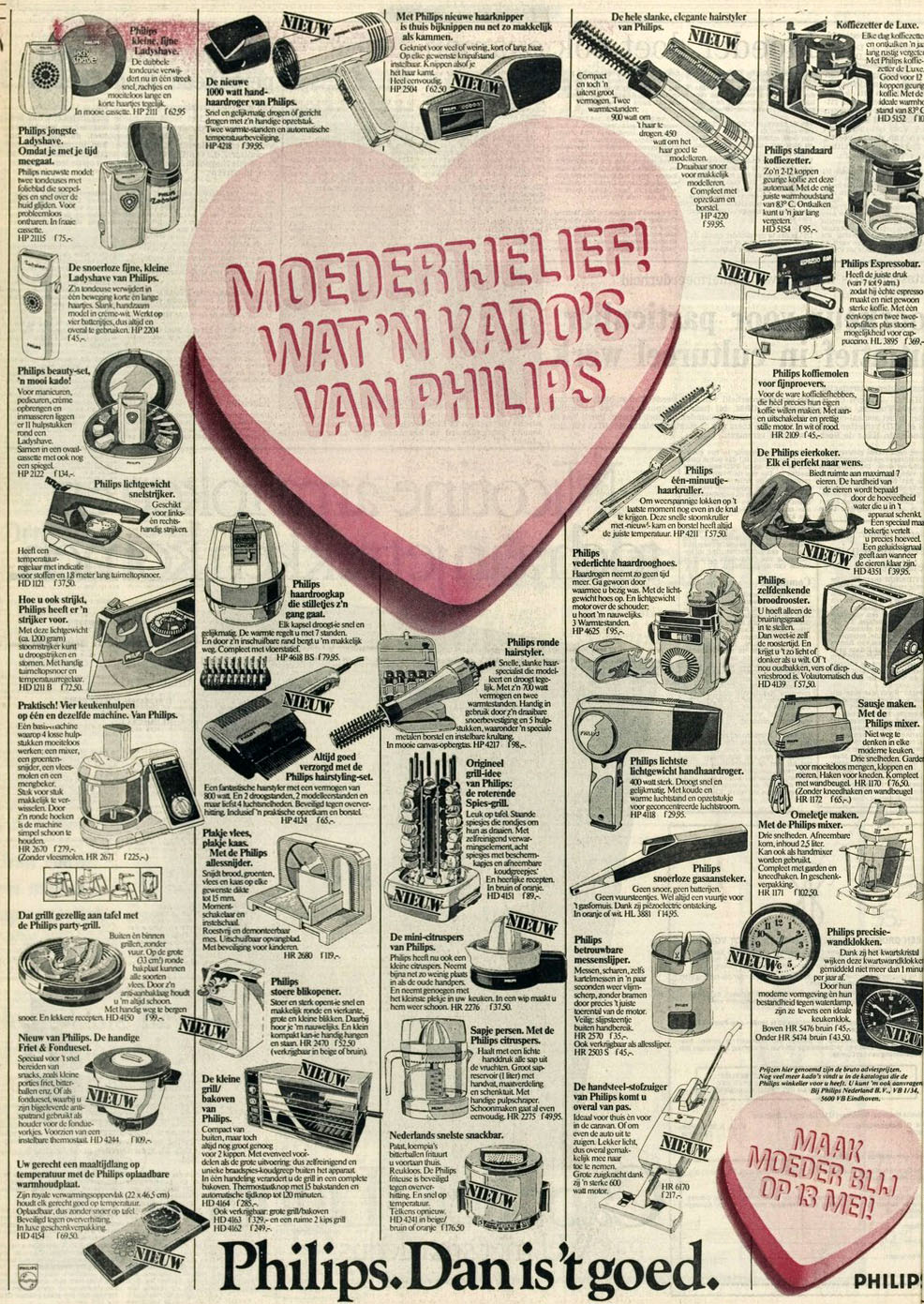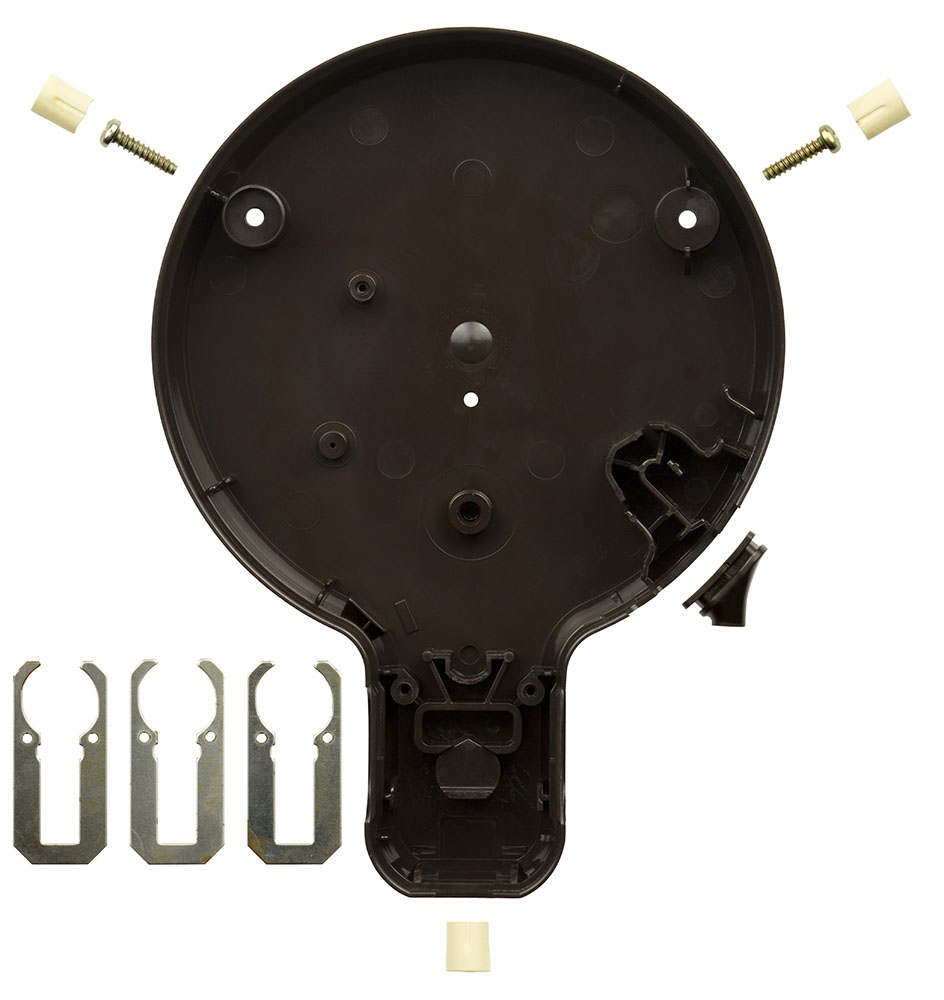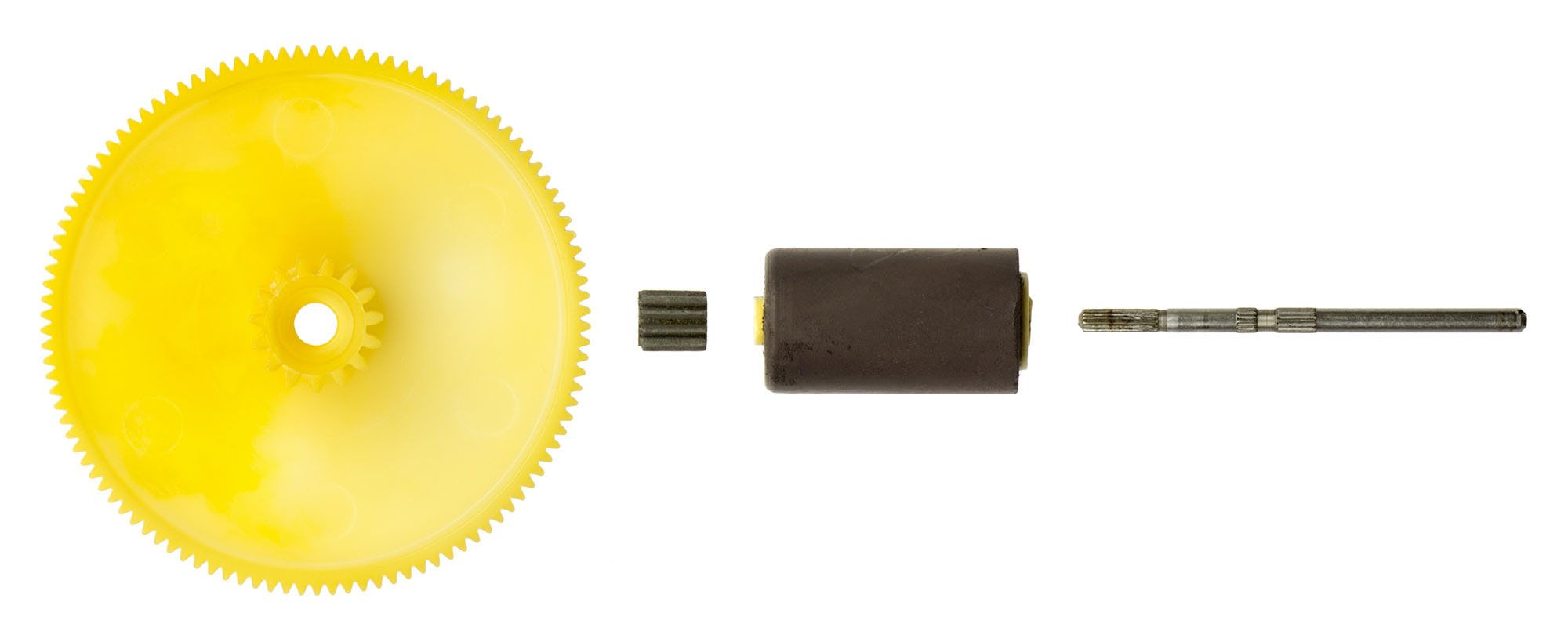
The End of Fruity Ambiguity
There was a time when you could compare apples and oranges. In fact, for the most part of history it was near impossible to differentiate between the two. Which may seem silly now, in hindsight, but consider the similarities. Both are fruits, growing on trees. Both are roundish in shape, attached to their tree by a stem originating from their ‘north pole’. Both can be bought at markets -both super and farmers’- greengrocers’ and fruit stalls. On average, apples and oranges are about the same size and weight. They have about the same water content (80-85%).
Small wonder then that people had trouble distinguishing one from the other. Until 1979, when Philips came to the rescue and after decades of secret research proudly presented its HR 2276 Apples and Oranges Differentiator (AOD for short).
The procedure was simple enough, for even the most clueless of housewives. After cutting a piece of ambiguous fruit in half along its equator, you simply pressed it, flat face down, onto the Determination Spinner, which would then automatically start spinning. The result clearly indicated whether you were dealing with an apple or an orange. If the result was lots of juice and a hollowed out half sphere, it was an orange. If your kitchen had become a mess of scattered fruit parts, it was an apple.
You’d think that the AOD was the best thing since sliced bread, but alas. Only two months after its arrival, it became obsolete, when a team of Oxford scientists discovered an even easier way to separate apples from oranges. It turned out that oranges differed from apples in colour, peel texture, smell and taste –differences that with a little practice proved to be quite easily recognisable by the basic senses of most people.
To add to the fiasco, it turned out the AOD had mistakenly labeled various fruits as oranges that were actually limes and lemons.
After this painful failure, Philips quickly remarketed their AOD (which by then had already been produced in enormous numbers, foreseeing great worldwide demand) and presented it as a handy machine to create hollow orange peels. When that didn’t boost sales, they pointed out that their machine could also produce fresh orange juice from oranges, and thus was born the juicer, which took the breakfast and brunch industry by storm.
*****

